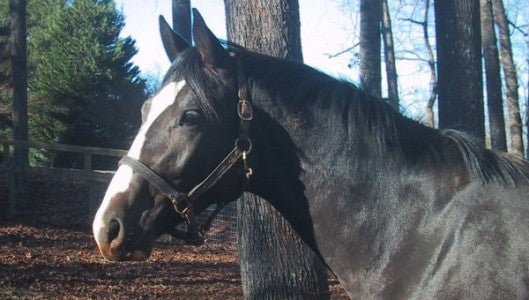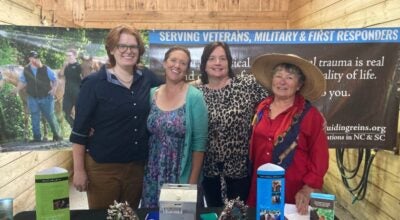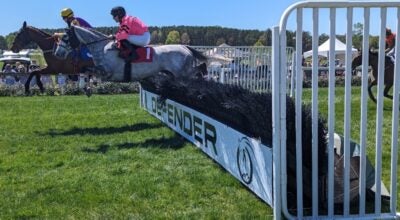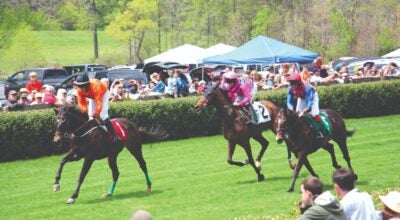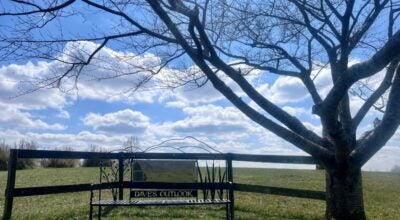Marydell Breeds Success
Published 8:00 am Monday, February 1, 2016
By Judy Heinrich
The past two years have been stellar for Marydell Farm of Columbus, one of the country’s top breeders of Warmblood sport horses. Owners Maryanna and Wendell Haymon are now showing the fourth generation of horses from their celebrated Grand Prix stallion Don Principe, and the accolades keep coming. 2014 and 2015 saw horses bred by Marydell Farm – identified by the initials “MF” after their names – take top honors at Dressage at Devon (Pa.) and the USDF Dressage Finals at the Kentucky Horse Park, in a variety of in-hand, under-saddle and championship classes (see box).
As the Haymons near retirement and prepare to downsize their operation, Maryanna says they have accomplished everything on their bucket list in their 20 years of breeding. Among many things, that includes being named US Dressage Federation (USDF) Breeder of the Year and US Equestrian Federation (USEF) Breeder of the Year, and having produced four winners of the USDF Traveling Trot Trophy, awarded annually to the highest scoring dressage sport horse in-hand for all breeds, all ages, and both genders. The Haymons are the first breeders to accomplish that, which they did from 2011 to 2014 with Duet MF, David Bowie MF, Danseuse MF and Danae MF, respectively.
So did the Haymons’ breeding success build on generations of expertise on either side of the family? Not hardly, according to Maryanna.
She grew up on a potato farm in central New Jersey where the family “never had an animal that didn’t have a job,” she says. “We had milk cows we would breed to harvest the calf for meat. That would devastate me but I grew up knowing it was going to happen.” Maryanna was also able to have horses, a pastime that became her passion.
As an adult dressage competitor the idea of becoming a breeder only occurred to her as a way to help fund her gelding’s show career after marrying Wendell and having a combined five children. “Like most naïve people I was going to sell a baby a year to pay for everything,” she laughs.
Between her years of showing dressage, her childhood on the farm, and a career that included being an emergency medical technician and neonatal nurse, Maryanna was at least as prepared as most new breeders for the expected or unexpected. And she and Wendell took their learning process seriously.
“We knew the quality we needed for broodmares and went looking for it, but quickly found out we couldn’t afford it. But we did find a young mare with the right bloodlines who needed hock surgery. We bought her and she gave us a daughter who I can honestly call our foundation mare, who gave us nine babies. Over time they sold for enough money that we were able to move out of the older, injured foals into buying quality foals in Europe to be our broodmares.
“The turning point in our breeding career came in 2000 when we went to Germany for the first time and took a breeder orientation course. Seeing the depth of quality, the sheer number of pedigree combinations, what was selling, what wasn’t selling – it gave us a better idea of what we were doing wrong and what we needed to do to be successful.”
After years of paying stud fees and counting up those costs, the Haymons decided it made sense to buy their own stallion. It was a decision that would change everything for them.
Maryanna first met the horse that would change their future on another trip to Germany. She saw Don Principe as a two-year-old son of Donnerhall (often called “the dressage sire of the century”) who had not passed the Hanoverian licensing. “He wasn’t fancy enough to pass at that age. But I really liked him. He was ‘normal’ as a youngster, which I think is what the horses who are going to be great usually are.” He also was not for sale at that time.
She saw Don Principe again when he was four and had just finished third in the performance test. “I fell in love with him, I can’t really articulate it. He is my equine soulmate, it’s a connection you can’t explain. You hear of a dog of a lifetime, a horse of a lifetime – he is all that and more for me.” Maryanna bought him in 2004, left him in Germany for a year, and brought him home in 2005.
“Prince” not only produces top quality offspring, he is one of the few top-level stallions who has maintained an active competition schedule. And he has competed successfully under a number of different riders, including Jim Koford, Michael Bragdell, Courtney King Dye, Jen Marchand, Jen Baumert – even Maryanna herself in his early days here. He is now back with Jim Koford and will continue to compete as his breeding career winds down.
“As he was recuperating from the collection of frozen semen last fall, he seemed so depressed. One day we took him down to a horse show just to play and he immediately got happier. So he’s the horse who will have to show until the day he dies.
“In my mind Prince is the most perfect horse in the world,” Maryanna says. “Logically he’s not perfect – he couldn’t be since he has been out-producing himself. But he is everything you want a horse to be: handsome, kind, generous, loves people better than horses, loves work, gets depressed if he can’t compete. It’s fun when you have a horse that is that competitive.”
Prince’s seven-year-old son Doctor Wendell MF is following in his sire’s footsteps in both competition and breeding. (Both stallions are represented for breeding by Hilltop Farm of Colora, Maryland.)
Doctor Wendell was 2015 USDF National Champion at the Prix St. George at the US Dressage Finals in November, and his offspring took second place in the 2015 “Get of Sire” class at Dressage at Devon. He is expected to make his Grand Prix debut this year on the winter Florida circuit.
Highs and Lows
Anyone in breeding for any length of time can tell you that along with the highs come lows. “This year I’ve had some of the lowest lows and the highest highs,” Maryanna said. “We lost three horses within five weeks. One was a yearling that got stepped on and was too injured to recover. Another died in the foaling process. And the third was a pasture accident, with a fractured femur.
“But then Prince, Doc and Duet do super at a horse show and you’re ‘up’ again. “It’s a roller coaster ride,” says Maryanna. “The business takes you from the peak of the mountains to the depth of the seas. I’m an adrenaline junkie, what can I say?
“Most breeders will tell you they do it because of the joy of seeing new life and the hopes and expectations for the future. We watch them at play when they’re first born and can tell what they can do within three days: how quickly do they stand, run around, do flying changes in a straight line? Once they’re under saddle you can tell whether they will be amateur, national or international level.”
As important as physical ability to Maryanna is the reputation that Prince and his offspring have for their temperament and willingness. “My breeding program has evolved to the point that I am wanting amateur-friendly Grand Prix horses that someone like myself can ride but could also hand off to a trainer and they could go to a CDI. That’s what Prince is like – I trail rode him weeks after having hip surgery and I knew he would take care of me. And then he can go out and win an FEI CDI, which he did with Courtney King Dye.”
Beyond Marydell’s own horses, Don Principe offspring are successfully competing with junior, amateur and professional riders, from Training Level through Prix St. George.
The Haymons are expecting six foals this spring and will breed to have at least two foals next year. “For every generation I put on the ground I have to look at, ‘can I support them this long, until they are seven?’” says Maryanna.
If she had one wish, it would be that more American riders would look at American-bred sport horses. “There is still a cachet about being able to say you imported a horse, but there are excellent sport horses being bred here now and I’d like to see more support for the American breeding programs.”
With results like the Haymons and Marydell Farm have achieved, it’s hard to imagine that it’s not on the horizon.


